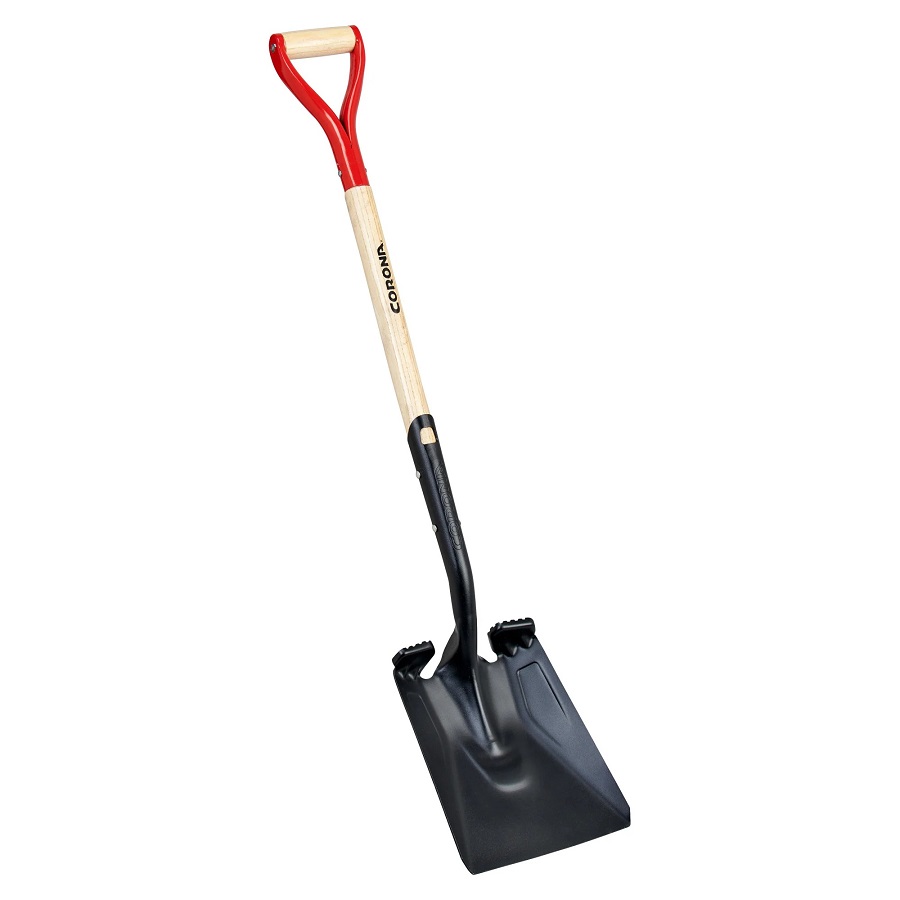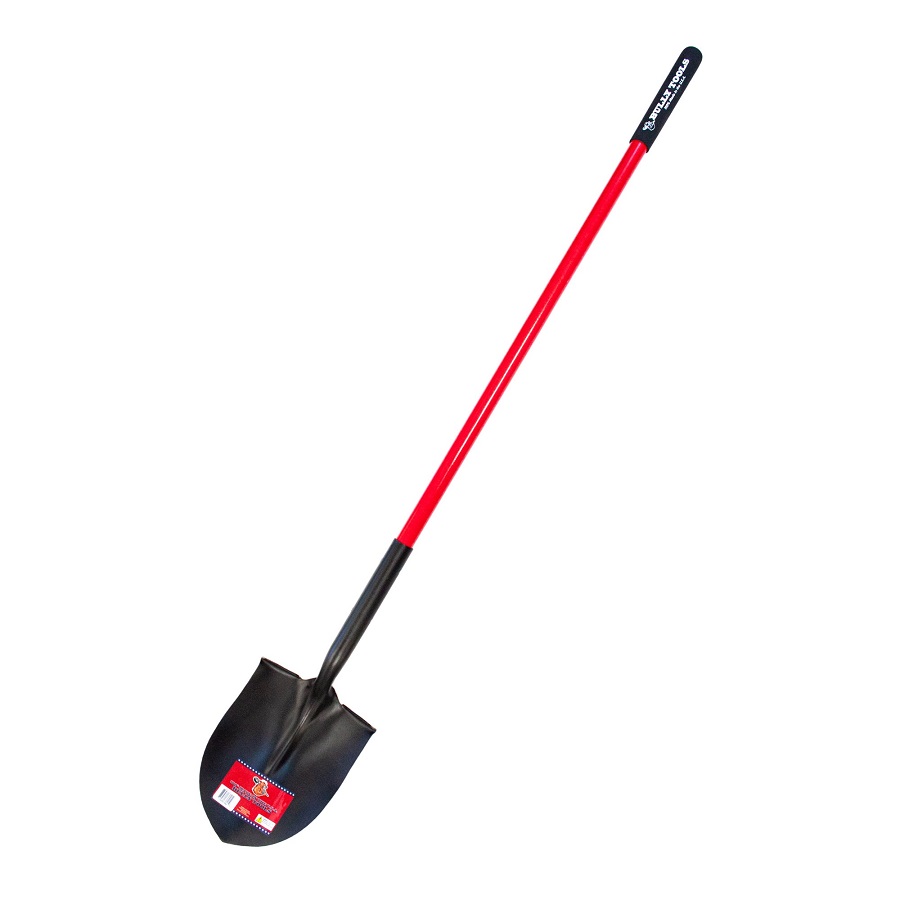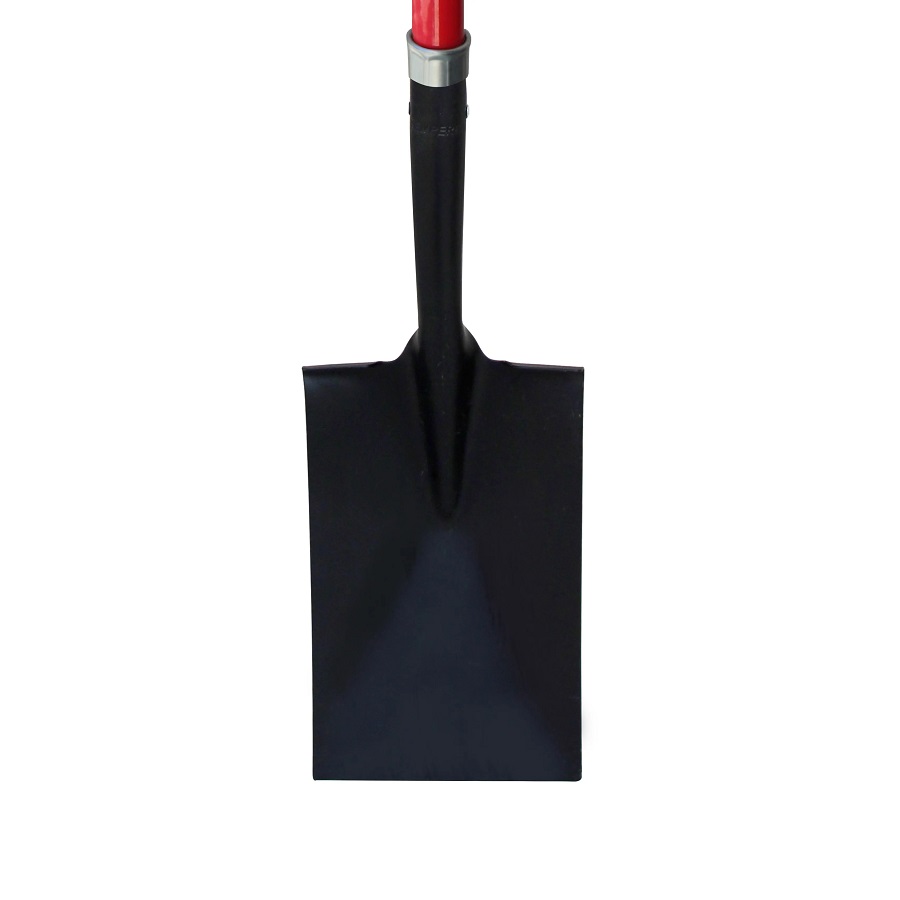A flat edge shovel is an indispensable tool for any gardener, whether you are a seasoned pro or a beginner. Its versatility and functionality make it a must-have for a wide range of gardening tasks, from digging and planting to moving soil and mulch. However, with so many options available on the market, choosing the right flat edge shovel can be a daunting task. This comprehensive guide will walk you through the key factors to consider when buying the ideal flat edge shovel for your garden.
Understanding the Importance of a Flat Edge Shovel
The Role of a Flat Edge Shovel in Gardening
A flat edge shovel, also known as a spade, is a tool with a broad, flat blade attached to a long handle. It is primarily used for digging, cutting, and moving soil, but it can also be useful for other tasks such as edging, leveling, and removing sod. The flat edge design makes it particularly effective for creating clean, straight edges and for working in tight spaces where precision is crucial.

Benefits of Using a High-Quality Flat Edge Shovel
- Efficiency: A well-made flat edge shovel allows you to work quickly and effectively, saving you time and effort.
- Precision: The flat edge provides a clean, sharp cut, making it ideal for creating neat borders and trenches.
- Comfort: A high-quality shovel is designed for comfort, reducing the risk of hand strain and fatigue.
- Durability: A durable flat edge shovel will last longer, providing you with years of reliable service.
Factors to Consider When Choosing a Flat Edge Shovel
Blade Material
The material of the blade is one of the most important factors to consider when choosing a flat edge shovel. Different materials offer different benefits, and the right choice depends on your specific needs and preferences.
Stainless Steel
- Pros:
- Corrosion Resistance: Stainless steel is highly resistant to rust and corrosion, making it a durable choice for outdoor use.
- Strength: It is strong and sturdy, capable of handling tough soil and roots.
- Ease of Cleaning: The smooth surface of stainless steel is easy to clean, reducing the risk of dirt and debris buildup.
- Cons:
- Weight: Stainless steel shovels can be heavier than those made from other materials, which may cause fatigue during extended use.
- Cost: They are generally more expensive than shovels made from other materials.
Carbon Steel
- Pros:
- Strength and Durability: Carbon steel is extremely strong and can withstand heavy use.
- Sharpness: It can be sharpened to a fine edge, making it ideal for cutting through tough soil and roots.
- Affordability: Carbon steel shovels are often less expensive than stainless steel ones.
- Cons:
- Rust Prone: Carbon steel is more susceptible to rust and corrosion, requiring regular maintenance to keep it in good condition.
- Maintenance: It needs to be cleaned and oiled regularly to prevent rusting.
Aluminum
- Pros:
- Lightweight: Aluminum is a lightweight material, making it easier to handle and use for extended periods.
- Corrosion Resistance: It is naturally resistant to rust and corrosion, although not as much as stainless steel.
- Affordability: Aluminum shovels are generally affordable and widely available.
- Cons:
- Softness: Aluminum is softer than steel, which means it may bend or deform under heavy use.
- Durability: It is not as durable as steel and may need to be replaced more frequently.
Handle Design
The design of the handle is another critical factor to consider, as it directly affects comfort and ease of use.
Ergonomic Handles
- Pros:
- Comfort: Ergonomically designed handles are shaped to fit the natural contours of your hand, reducing strain and fatigue.
- Grip: They often feature non-slip materials or textures, providing a secure grip even when your hands are wet or dirty.
- Versatility: Many ergonomic handles are suitable for both left-handed and right-handed users.
- Cons:
- Cost: Ergonomic shovels can be more expensive than standard designs.
- Size: Some ergonomic handles may be bulkier, which could be a disadvantage if you have smaller hands.
Traditional Handles
- Pros:
- Simplicity: Traditional handles are straightforward and easy to use.
- Affordability: They are often less expensive than ergonomic designs.
- Variety: Traditional handles come in a wide range of materials, including wood, plastic, and metal, allowing you to choose the one that best suits your needs.
- Cons:
- Comfort: They may not provide the same level of comfort and support as ergonomic handles, especially during extended use.
- Grip: Standard handles may become slippery when wet, increasing the risk of dropping the shovel.
Blade Shape and Size
The shape and size of the blade can significantly impact its functionality and suitability for different tasks.

Blade Shapes
- Flat Blades:
- Pros:
- Versatility: Flat blades are suitable for a wide range of tasks, including digging, planting, and moving soil.
- Precision: They allow for precise cuts and are ideal for working in tight spaces.
- Cons:
- Limited Depth: Flat blades may not be as effective for deep digging, especially in hard or compacted soil.
- Pros:
- Curved Blades:
- Pros:
- Deep Digging: Curved blades are designed for deeper digging, making them ideal for planting bulbs and larger plants.
- Soil Turning: They are excellent for turning and aerating soil, improving drainage and root growth.
- Cons:
- Less Precision: Curved blades may be less precise for detailed work, such as creating neat borders or trenches.
- Pros:
- Pointed Blades:
- Pros:
- Penetration: Pointed blades are great for breaking through tough soil and roots.
- Weeding: They are particularly useful for removing weeds, as the pointed tip can easily cut through roots.
- Cons:
- Limited Versatility: Pointed blades may not be as versatile as flat or curved blades for general gardening tasks.
- Pros:
Blade Size
- Small Blades:
- Pros:
- Precision: Smaller blades are ideal for detailed work, such as creating neat borders or trenches.
- Maneuverability: They are easy to maneuver in tight spaces, making them perfect for small gardens or container gardening.
- Cons:
- Limited Capacity: Smaller blades can only move a limited amount of soil at a time, which may slow down your work.
- Pros:
- Large Blades:
- Pros:
- Efficiency: Larger blades can move more soil with each scoop, making them more efficient for large-scale projects.
- Versatility: They are suitable for a wide range of tasks, from digging to moving soil.
- Cons:
- Bulkiness: Larger blades can be more cumbersome to use, especially in confined spaces.
- Weight: They may be heavier, which can lead to fatigue during extended use.
- Pros:
Additional Features
Some flat edge shovels come with additional features that can enhance their functionality and convenience.
Markings and Measurements
- Pros:
- Accuracy: Shovels with markings and measurements on the blade can help you dig to the correct depth, ensuring optimal plant placement.
- Convenience: You won’t need to carry a separate measuring tool, as the shovel itself provides the necessary measurements.
- Cons:
- Wear and Tear: The markings may wear off over time, especially if the shovel is frequently used in harsh conditions.
Hanging Holes
- Pros:
- Storage: Shovels with hanging holes can be easily stored on a hook or pegboard, keeping them organized and within reach.
- Accessibility: They are always ready to use, eliminating the need to search for them in a cluttered toolbox.
- Cons:
- Aesthetic: Some gardeners may find the hanging hole to be an eyesore, preferring a cleaner, more streamlined design.
Non-Slip Grip
- Pros:
- Safety: A non-slip grip provides a secure hold, reducing the risk of the shovel slipping out of your hand.
- Comfort: It can improve the overall comfort of using the shovel, especially in wet or muddy conditions.
- Cons:
- Durability: The non-slip material may wear down over time, requiring replacement or reapplication.
How to Choose the Right Flat Edge Shovel for Your Needs
Assess Your Gardening Tasks
Before selecting a flat edge shovel, consider the types of gardening tasks you will be performing. If you primarily work with small seeds and seedlings, a shovel with a small, flat blade and a non-slip grip may be the best choice. For larger plants and deep digging, a shovel with a curved or pointed blade and a robust handle will be more suitable.

Consider Your Physical Comfort
Your physical comfort is crucial, especially if you spend a lot of time gardening. If you have arthritis or other hand conditions, an ergonomic shovel with a soft, cushioned handle may be the best option. For those with smaller hands, a shovel with a smaller, more manageable handle may be more comfortable.
Think About Durability and Maintenance
If you plan to use your shovel frequently and in challenging conditions, a durable, rust-resistant material like stainless steel is a wise choice. While it may be more expensive, the longevity and reliability of the shovel will be worth the investment. On the other hand, if you are a casual gardener, a more affordable option like aluminum may suffice.
Read Reviews and Test Before Buying
Reading reviews from other gardeners can provide valuable insights into the performance and durability of different shovels. Additionally, if possible, try to test the shovel in person before purchasing. This will give you a feel for its weight, balance, and overall comfort, helping you make a more informed decision.
Common Uses of a Flat Edge Shovel
Digging and Planting
One of the primary uses of a flat edge shovel is for digging and planting. Whether you are planting bulbs, shrubs, or trees, a flat edge shovel allows you to create clean, precise holes and trenches. The flat blade is particularly useful for creating straight, even edges, which is essential for achieving a neat and tidy garden.
Moving Soil and Mulch
A flat edge shovel is also ideal for moving soil and mulch. Its broad, flat blade can scoop up large amounts of material, making it efficient for filling pots, raised beds, or spreading mulch around your garden. The flat edge design ensures that you can level the soil or mulch evenly, promoting healthy plant growth.
Edging and Trenching
Creating clean, defined edges and trenches is another common use for a flat edge shovel. The flat blade allows you to cut through soil and sod with precision, making it easy to create neat borders and pathways. This is particularly useful for defining garden beds, creating walkways, or installing landscape edging.
Removing Sod and Weeds
A flat edge shovel is also effective for removing sod and weeds. The flat blade can slice through the roots of grass and weeds, making it easier to remove them without leaving behind any remnants. This is especially useful for preparing new garden beds or clearing areas for landscaping projects.
Leveling and Grading
When it comes to leveling and grading, a flat edge shovel is an invaluable tool. The flat blade can be used to scrape and level soil, ensuring that your garden beds and surfaces are even and smooth. This is essential for proper water drainage and for creating a uniform appearance in your garden.
Maintenance and Care Tips
Cleaning
Regular cleaning is essential to maintain the performance and longevity of your flat edge shovel. After each use, rinse the blade and handle with water to remove any dirt, mud, or debris. For stubborn dirt, use a stiff brush or a mild detergent to scrub the blade. Dry the shovel thoroughly to prevent rust and corrosion.
Sharpening
A sharp blade is crucial for efficient and effective use. Over time, the blade of your flat edge shovel may become dull. To sharpen the blade, use a file or a sharpening stone. Hold the file at a 20-30 degree angle and run it along the edge of the blade, moving from the base to the tip. Repeat this process until the blade is sharp and free of nicks and burrs.
Storage
Proper storage is essential to protect your flat edge shovel from damage and prolong its lifespan. Store the shovel in a dry, cool place, away from direct sunlight and moisture. If possible, hang the shovel on a hook or rack to keep it off the ground and prevent the blade from becoming bent or deformed.
Lubrication
For shovels with metal components, regular lubrication can help prevent rust and corrosion. Apply a thin layer of oil or a rust inhibitor to the blade and any metal parts of the handle. This will create a protective barrier and keep the shovel in good condition.
Conclusion
Choosing the right flat edge shovel is a decision that should not be taken lightly. The right shovel can make your gardening experience more enjoyable, efficient, and productive. By considering factors such as blade material, handle design, blade shape and size, and additional features, you can find a shovel that meets your specific needs and preferences. Whether you are a seasoned gardener or just starting out, investing in a high-quality flat edge shovel is a step towards a more successful and satisfying gardening journey. Happy gardening!
